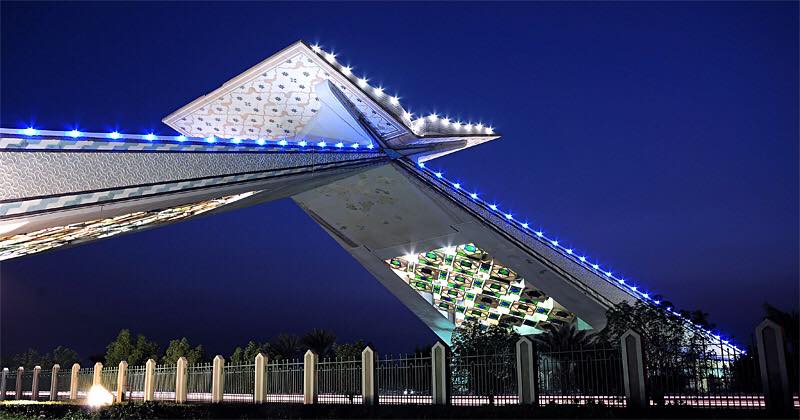Mecca Gate
Published On Mar 23, 2021

Historic Jeddah is situated on the eastern shore of the Red Sea. From the 7th century AD it was established as a major port for Indian Ocean trade routes, channelling goods to Mecca. It was also the gateway for Muslim pilgrims to Mecca who arrived by sea. These twin roles saw the city develop into a thriving multicultural centre, characterized by a distinctive architectural tradition, including tower houses built in the late 19th century by the city’s mercantile elites, and combining Red Sea coastal coral building traditions with influences and crafts from along the trade routes.
Mecca (/ˈmɛkə/; Arabic: مكة), also transliterated Makkah (pronounced [ˈmæk.kæ]), is a city in the Hejaz in Saudi Arabia. It is the capital of that kingdom’s Makkah Region. The city is located 70 km (43 mi) inland from Jeddah in a narrow valley at a height of 277 m (909 ft) above sea level. Its resident population in 2012 was roughly 2 million, although visitors more than triple this number every year during the hajj (“pilgrimage”) period held in the twelfth Muslim lunar month of Dhu al-Hijjah.
As the birthplace of Muhammad and the site of Muhammad’s first revelation of the Quran (specifically, a cave 3 km (2 mi) from Mecca), Mecca is regarded as the holiest city in the religion of Islam[7] and a pilgrimage to it known as the Hajj is obligatory for all able Muslims. Mecca is home to the Kaaba, by majority description Islam’s holiest site, as well as being the direction of Muslim prayer. Mecca was long ruled by Muhammad’s descendants, the sharifs, acting either as independent rulers or as vassals to larger polities. It was conquered by Ibn Saud in 1925. In its modern period, Mecca has seen tremendous expansion in size and infrastructure, home to structures such as the Abraj Al Bait, also known as the Makkah Royal Clock Tower Hotel, the world’s third tallest building and the building with the largest amount of floor area. During this expansion, Mecca has lost some historical structures and archaeological sites, such as the Ajyad Fortress. Today, more than 15 million Muslims visit Mecca annually, including several million during the few days of the Hajj. As a result, Mecca has become one of the most cosmopolitan and diverse cities in the Muslim world, despite the fact that non-Muslims are prohibited from entering the city.